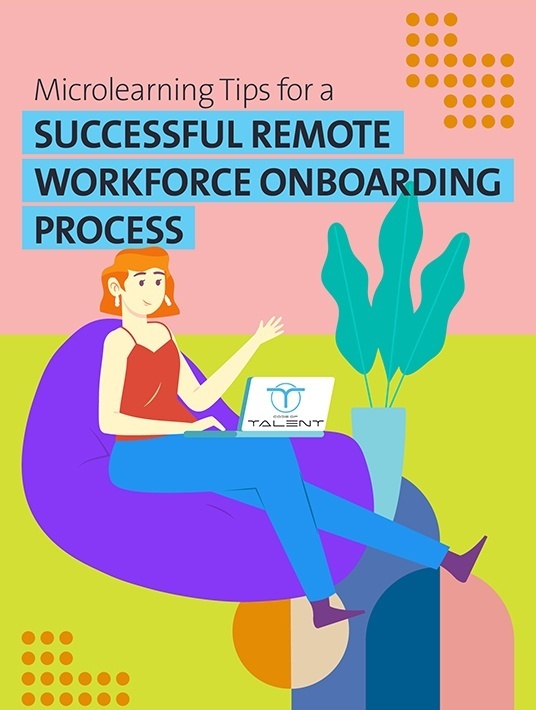How To Onboard Remote Workers With A Microlearning Platform
We must change people's mindsets about the importance of learning in the workplace if we want to establish an effective learning strategy. Microlearning platforms can help bring about this behavioral change by focusing on the individual needs of an employee, increasing employee engagement, and more. The following are 4 ways microlearning platforms make onboarding remote workers successful by encouraging the desired behavioral change in the remote employees.

1. Enable A Continuous Learning Experience
Your production and deployment times will be improved by the focused design of microlearning because you will be creating only the content required to solve the specific business problem at hand.
More importantly, the ongoing learning experience supported by microlearning platforms in a remote onboarding process would provide you with continuous access to your workers, minimizing the need to schedule them away from their work for learning/training purposes.
Overall, microlearning will make you more proactive in solving business problems before they lead to failures by ensuring the required behavioral change in new remote workers through a continuous learning experience.
2. Increase Employee Engagement
A focus on value is demanded by microlearning. By eliminating fluff and addressing serious workplace issues in the remote onboarding process, you can allow your remote employees to know ‘what’s in it for them’. Moreover, you reduce the additional effort needed by remote workers to access training by integrating the learning experience into their workflow.
Ultimately, this will enhance employee engagement dramatically and will all but remove the need to track people down to complete the training needed.
3. Make Access, Consumption, And Retention Of Information Easier
Microlearning is a technique to reconcile the way we support workers with the way individuals currently learn. This leads to a more individual learning experience that encourages ease of consumption and enhances long-term retention.
And, since you can integrate microlearning into the everyday workflow, workers have fewer obstacles in their path when trying to access valuable opportunities for growth. This makes the process of onboarding remote workers extremely effective.
4. Focus On The Individual Needs Of Remote Workers
Finally, microlearning platforms allow you to focus on the individual needs of your remote employees to drive desired behavioral change in them during the onboarding process. The targeted nature of microlearning—on a particular business objective—helps you to plan your content delivery more precisely. You can provide what remote workers need to perform to the best of their abilities instead of using standardized, one-size-fits-all training.
Additionally, onboarding remote workers with microlearning platforms will help you lay the groundwork for ongoing innovation and will allow you to create a learning experience that is incredibly personalized and adaptive. With this, you can drive behavioral change in your remote workers when and where needed.
By driving the desired behavioral change in remote workers during the onboarding process, you can prove the ROI of your new remote employee training. Microlearning allows you to do just that. It helps you transition from a place-and-time technique to an ongoing learning experience.
Microlearning enables you to introduce new, continuous learning and support strategies because it blends seamlessly into the workflow. You're definitely not going to get rid of all your current strategies for onboarding and training new employees. However, when you roll out an online module, microlearning strategies, such as on-demand tools and knowledge reinforcements, can make these interactions with new workers more effective.
If you are wondering about the benefits microlearning has to offer to your remote workforce onboarding process, download the eBook Microlearning Tips For A Successful Remote Workforce Onboarding Process. Discover the best microlearning tips that will help you succeed in your remote workforce onboarding process stress-free. Join our webinar and learn which microlearning platform features will boost your employee onboarding process!









